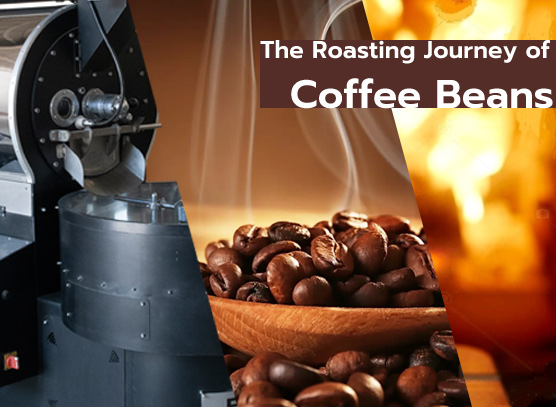It is possible for green coffee beans to turn into the world's most popular color and achieve a unique taste through the coffee roasting process. Green coffee is the processed seed of the coffee tree fruit. When these seeds are roasted properly, you will be presented with a unique cup of coffee flavor.
Coffee roasting is a heat-triggered chemical process in which aromatics, acidity scale, and other flavor components are created, balanced, or altered to enhance the taste, acidity scale, aftertaste, and texture of the coffee as desired.
Thermal adjustments during roasting are important in transforming the many complex raw materials in green coffee beans into positive taste characteristics in roasted coffee beans. Choosing the right temperature and the right roasting machine directly affects the flavor. Understanding the different stages of roasting will help you control the flavor of your cup and understand how different roasts result in different cup flavors.

Yellowing: In the first few minutes, the core remains greenish, then it turns a lighter yellowish color and a grassy smell appears.
Steam: As the amount of water in the coffee beans decreases, the beans begin to evaporate. This is also known as the drying phase.
First Crack: The steam becomes fragrant. You can hear the first crackling as the actual roasting begins. The sugars begin to caramelize, the bound water comes out, the structure of the bean breaks down, and the oils migrate out of their small pockets.
First Roasting Stage: After the first crackling, roasting can be considered completed at any time according to your taste. The cracking is an audible sign and, along with the sight and smell, tells you what stage of frying is at.
Caramelization: Caramelization continues, oils migrate and the size of the bean expands as the coffee roasting gets darker. The correct flavor of coffee roasting usually reaches its full result at this stage.
Second Crack: At this point, a second crack can be heard, usually more variable than the first. At this point, the roasting character begins to overshadow the origin character of the coffee bean.
Darkening Roasting: As the roasting becomes very dark, the smoke becomes sharper as the sugars are completely burned and the structure of the coffee beans deteriorates. At the end of the roasting process, the sugars are completely burned, leaving only a thin-bodied cup of "coal water" as a result of roasting.